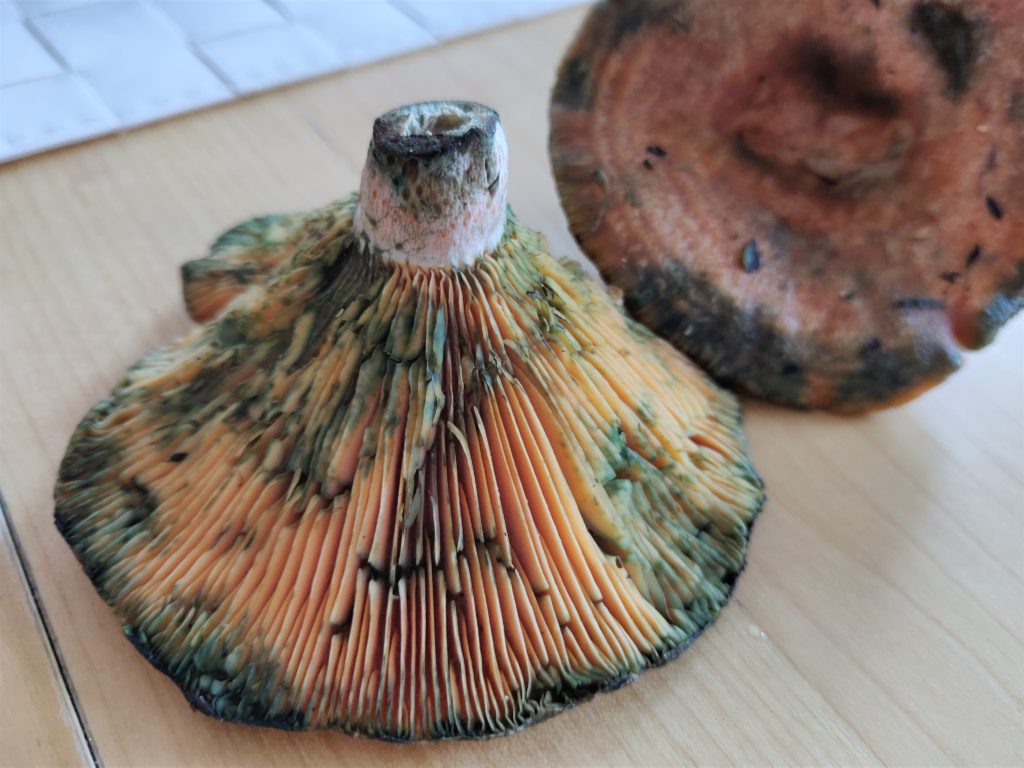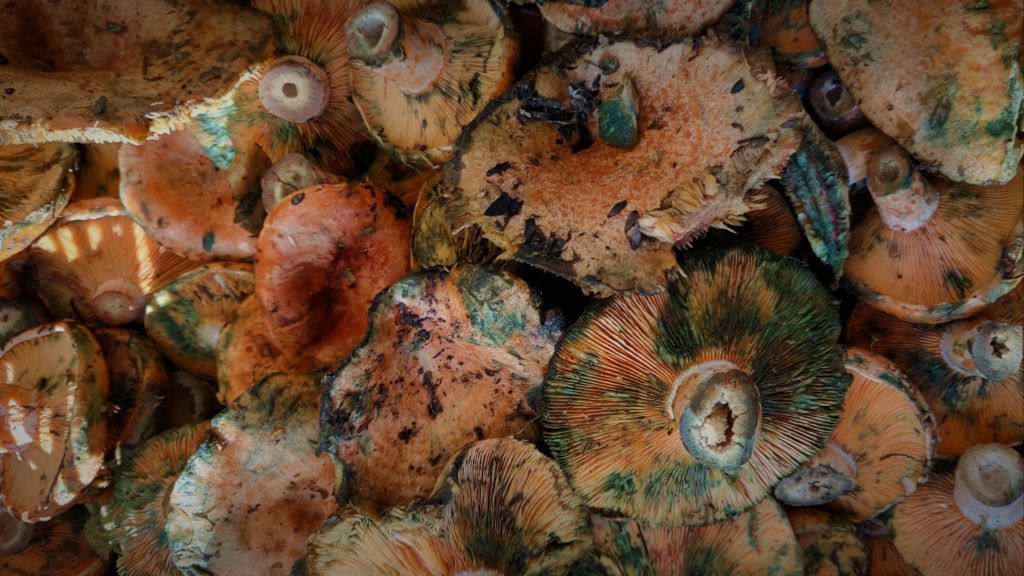- Latin: Lactarius deliciosus
- English: Saffron milk cap, Red pine mushroom
- French: Lactaire délicieux
- Italian: Sanguinaccio (Calabria), Sanguinin (Liguria), Lardaru Sanguignu nel salento (Puglia), Rossella, Sanguinello, Pennenciole, Pennecciola, Pineggiola (Toscana), Sanguinoso (Umbria)
- Spanish: Mízcalo, Niscalo, Rebollón, Robellón
- Portuguese: Sancha, Tancha, Pinheira, Vaca-vermelha, Míscaro, Níscaro
- German: Edel-Reizker
- Dutch: Oranjegroene melkzwam
- Russian: Рыжик настоящий
What is Lactarius deliciosus?
Lactarius deliciosus is a wild milk-cap mushroom found under pine growths throughout continental Europe, although it seems to be more commonly found in the Spain, Portugal and Italy, as well as in the Slavic lands such as Bulgaria, Poland and Russia.
What are its characteristics?
Lactarius deliciosus is often found under pine trees, hence it is sometimes called the orange or red pine mushroom. Its name “lactarius” refers to its “milk“: when you cut the mushroom into half, you will see the orange “milk” along the edges of the mushroom, especially in the stem area.
It is known that if you eat too many lactarius deliciosus, your urine will also turn orange.

How do you cook it?
Lactarius deliciosus seems to be prepared differently in different countries.
In Spain and Portugal, lactarius deliciosus is one of the most sought-after wild mushrooms. It is fried in olive oil with garlic and garnished with parsley. The Iberians warn against using butter whenever frying the lactarius deliciosus. In Cyprus, the mushroom is grilled and dressed with olive oil, salt and lemon.
In Slavic lands such as Poland, the lactarius deliciosus is sauteed in butter and cream. More often, like in Russia, it is salted with juniper berries, dried dill, caraway seeds, cracked black pepper and garlic for about four days.
A note of caution though: salting mushrooms may lead to poisoning. The Slavs eat their salted lactarius deliciosus with bread and vodka as a snack!
Personally, I do not find its taste that distinguished, contrary to its name “deliciosus”. I tried both sauteed and grilled, and I much prefer the plerotus.
Why does lactarius deliciosus look green?
It is not mould that is growing on the lactarius deliciosus. Once it is picked, it gets bruised when it comes into contact with your hands or simply with air, and the bruises look green.

Lactarius deliciosus is distinctly European
People in the US and Canada or even Australia often mistake the mushrooms they find as lactarius deliciosus. Sorry, the red milk and the green bruises are not its only distinctive characteristics. The Lactarius deliciosus is a “phylogenetically, morphologically, and ecologically distinct European species that does not occur in North America, characterized by mycorrhizal association with pines (species of Pinus)“.
On a side note, the Lactarius deliciosus is so European, that it is the earliest artistic depiction of a mushroom, as found on a fresco in Herculaneum, a surviving Roman town like Pompeii.
Before you go, check out my posts on wild garlic, Bath asparagus or the Cordyceps Militaris.

